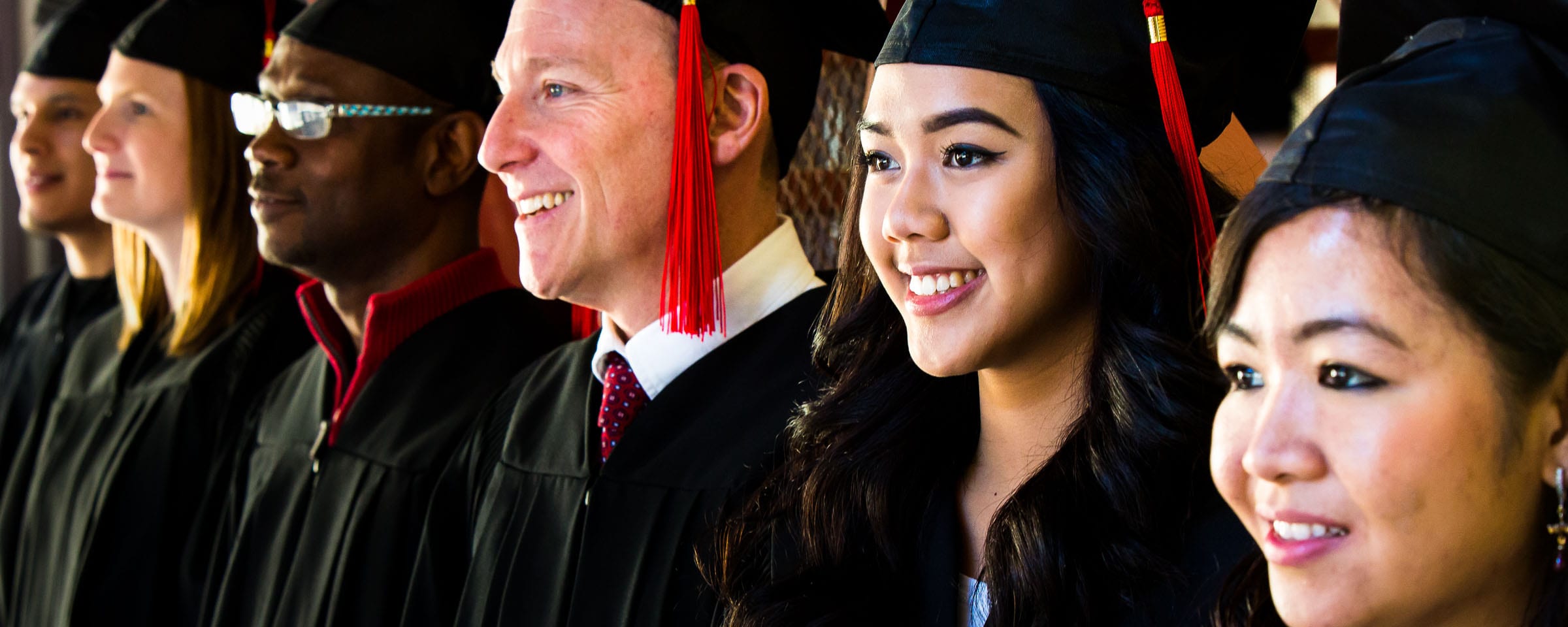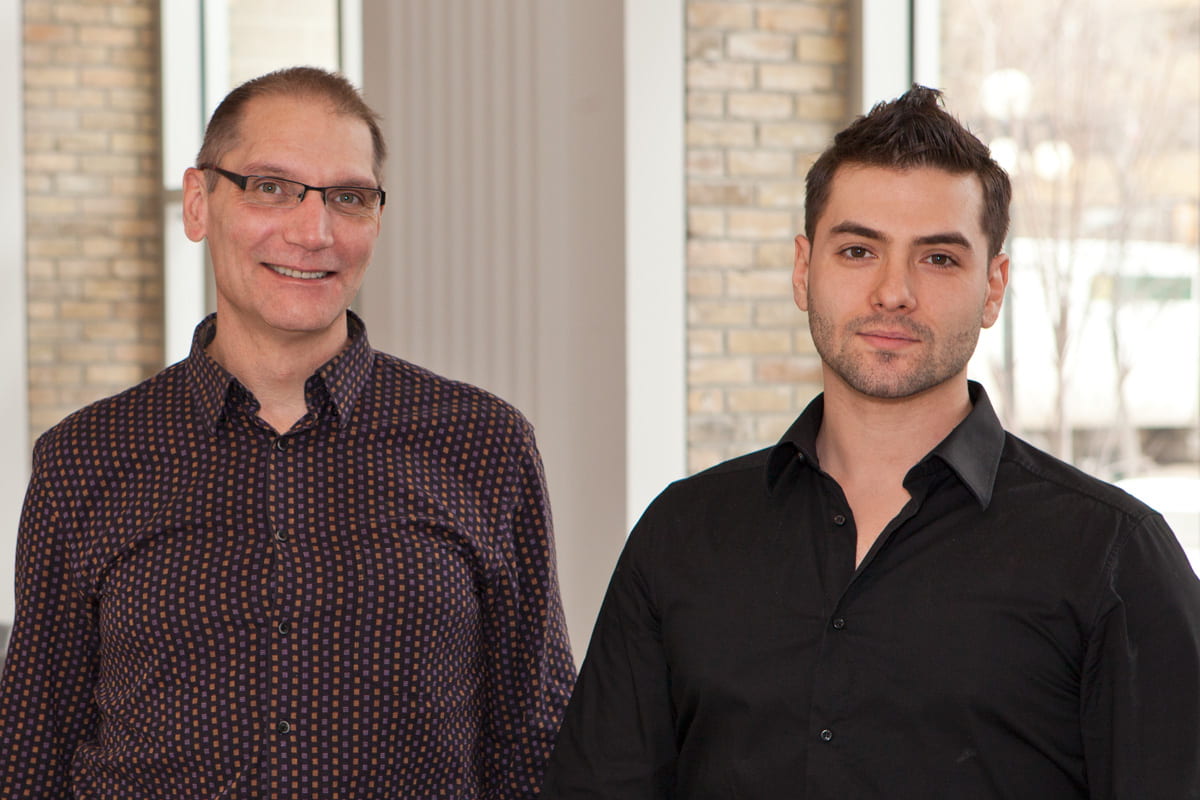Grad profile: Glenn Garbett (Structural Technology, 1998); Chris Sousa (Building Construction Technician, 2012)
These grads aren’t just giving back to Red River College — they’re building it.
Chris Sousa (Building Construction Technician, 2012) and Glenn Garbett (Structural Technology, 1998) are two of the key pillars behind the Paterson GlobalFoods Institute, Red River College’s new Exchange District campus and residence, which is racing toward its official opening on February 21.
As site supervisor and project manager, respectively, Sousa and Garbett have been marshalls to the small army of tradespeople, engineers, architects and planners tasked with bringing a 100-year-old Winnipeg heritage building into the 21st century.
“Ever since my teenage years, I really enjoyed this building,” Sousa says, sitting in the sunlit mixology class where bottles and glasses look out onto Old Market Square. “I fell in love with the building and had my own personal plans with what I wanted to do with it. I didn’t expect it to be a school.”
“To have Red River College have a great idea for the use of the old building — to add onto it without interfering with it, to not make it stand out like a sore thumb and to make the heritage a key feature — it was a great privilege to work on.”
“There have been definite project challenges that make PGI one of the most memorable buildings I’ve worked on,” Garbett says. “I’ve worked on other heritage buildings downtown, but it was nowhere near as complex.”
Those complexities started on day one for the two men when they met the former bank whose proud, smiling exterior hid confusing, twisted and occasionally malicious guts.
“Everywhere we turned it was like opening a can of worms,” Sousa says. “If walls weren’t collapsing, it was the ceiling. If the ceiling wasn’t collapsing, it was the floors. There was always something going on that kept you on your toes.”
Sousa says the crumbling concrete, floods and unlabeled infrastructure hiding behind walls has set him up to face any challenge. “It’s one of those projects that really prepares you for any future project. The way I see it, it was a man-maker; if you can go through this project and not learn something, you’re really in the wrong industry.”
PGI’s downtown location only added to the building’s unwieldy character.
“Confined sites like this where you’re in a small urban setting,” Garbett explains, “and trying to set up cranes, mobilize workers, trying to get your materials on site, on time, keeping them from being vandalized … You don’t know before you get into the building what challenges you’re going to face … As you get going, you get more comfortable, you think you’re going in the right direction. Then something will whack you on the back of the head and smarten you and you say, ‘Oh, no you’re not quite there yet.’”
As site supervisor, Sousa was in charge of the construction teams facing these challenges. That leadership role had its own challenges, however.
“At any given moment we had about 130 people on site. One of my main responsibilities is making sure everyone is safe so at the end of the day, everyone gets to go home in one piece. That was a huge issue, because the team was spread out over eleven floors.”
Garbett, who managed communication flowing from the architects, planners and college to the site (and back), agrees coordination was the daily Holy Grail. “Trying to keep everyone on the same page, get the information out, get it approved, get it pushed through the college because a lot of time there’s money involved — it is a very large, complex orchestra of things happening to keep everyone moving forward.”
The two men’s first experience of what music that orchestra would finally produce came on December 11, 2012, when RRC gave a special reception to stakeholders in the nearly completed space. Watching people move through rooms they’d painstakingly retrofitted, Sousa and Garbett were reminded why they ever took up a gauntlet like PGI.
“It was very nice to see the building become a living, breathing building and not to hear the hammering of tools … and the frustrations,” Sousa says. “When you overcome all that and you stand in this building and look back… then everybody starts getting the sense of pride, especially from the site personnel’s point of view, who most of the time don’t see the completion of a project.”
“You do walk around with your chest sticking out, saying, ‘That’s my building. That? That’s what I did.’”
“I don’t tend to get in the limelight,” Garbett says. “I was sitting up in one of the lounges and it was kind of cool because you could hear the glasses tinkling and the laughter. Chris had come up around the corner and I said, ‘Hey Chris, you hear that?’ He stopped for a second and I said, ‘People. This place is occupied, we’re almost there.”
Profile by Matt TenBruggencate (second year, Creative Communications)

